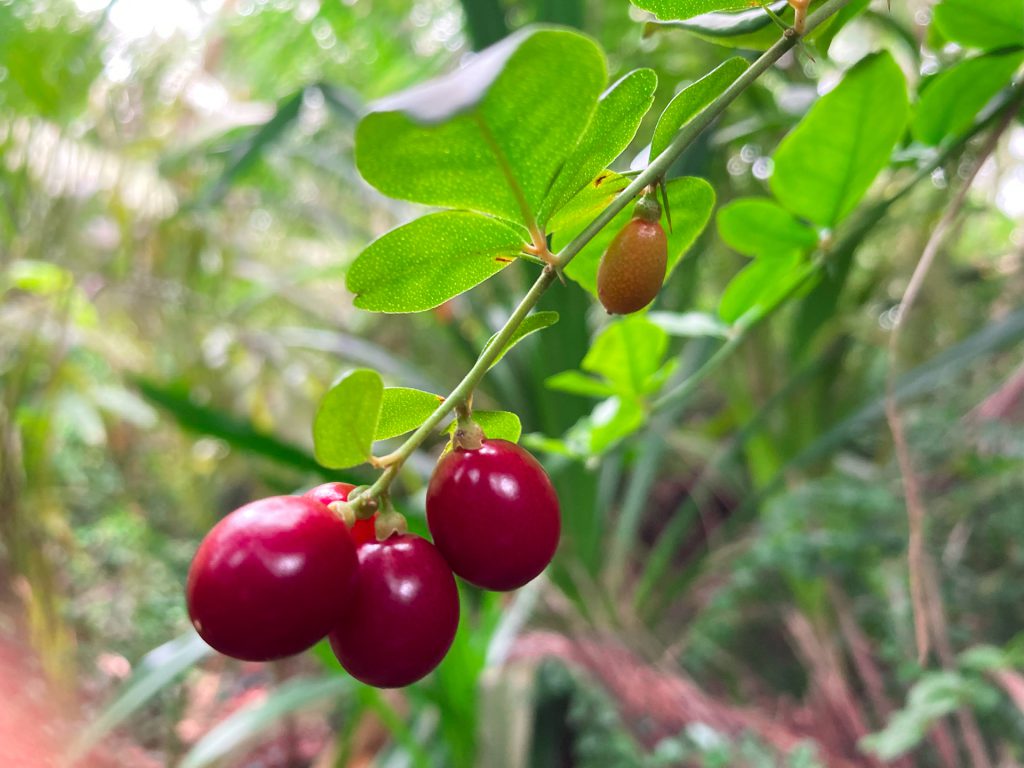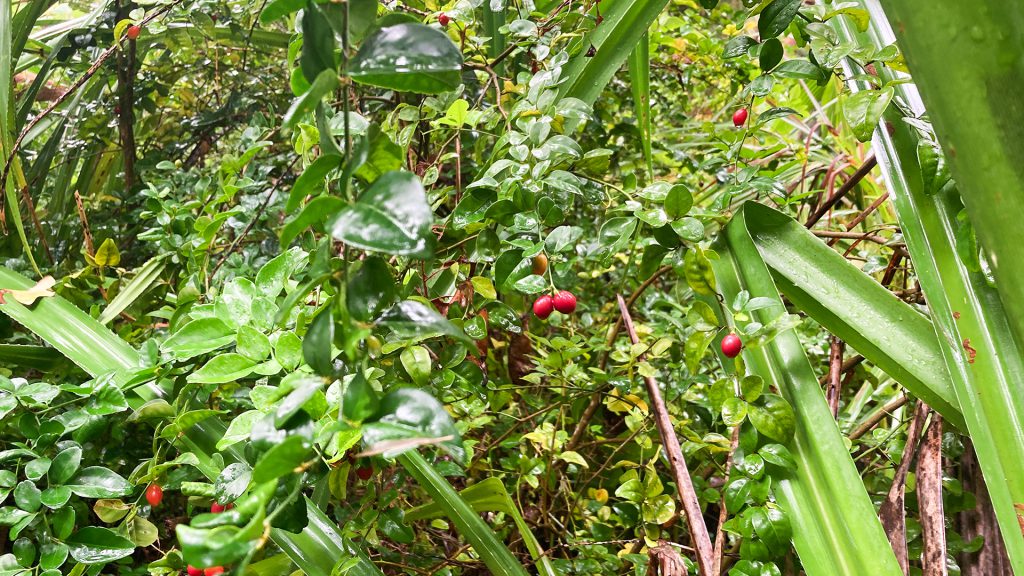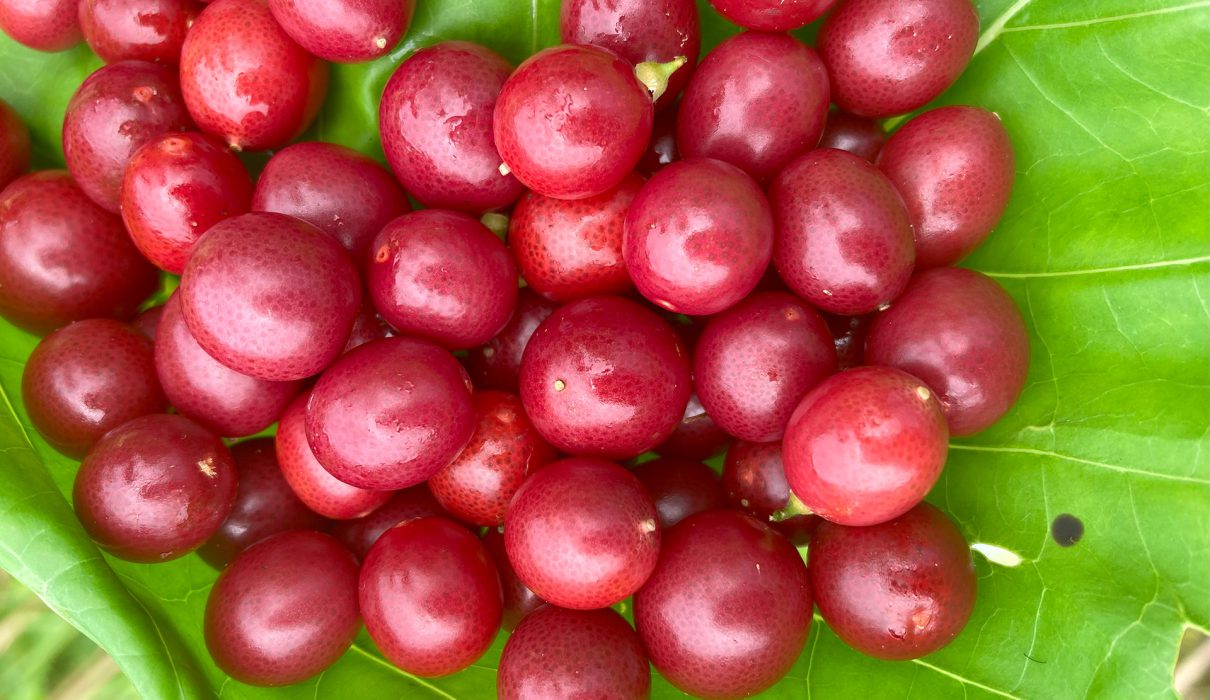Lime Berry, known locally as Kudhilunboa, stands as a symbol of the region’s natural diversity. Many childhood memories revolve around the joy of picking limeberries – a tradition woven into the vibrant fabric of our youth.
Botanical Details: Scientific Classification:
- Family: Rutaceae
- Genus: Triphasia
- Species: trifolia
Distinctive Features: The Lime Berry is a flexible shrub with twigs and paired spines. Its leaves, arranged in sets of three, vary in size – the main leaf is ovate, while the side leaves are smaller. The plant blooms with solitary or clustered flowers, leading to the formation of round or oval fruits.


Fruit Description: The limeberry, resembling a small citrus fruit, has a pulpy, sweet lemon-like taste. The fruits, measuring 1.2–1.5 cm in length and 10–15 mm in diameter, bring vibrant colors to the landscape when they ripen, turning a dull reddish-orange or crimson.
Cultural Significance: In the rich tapestry of Maldivian culture, Lime Berry holds a special place. The tradition of gathering in the forest to pick limeberries, using large leaves to make cone, is a cherished practice. These cone, made from leaves of the Corkwood tree or beach gardenia, carry the laughter and adventures of childhood friends.
Alternative Uses: Beyond its beauty and taste, Lime Berry has creative uses. Young limeberries can be turned into a glue-like substance, serving as a natural adhesive. This homemade glue, similar to spur glue, becomes a playful tool for crafting and sticking papers.
Taxonomic Information:
- Dhivehi Name: Kudhilunboa
- Fuvahmulah Name: Fonilinboi
- English Names: Lime Berry, Myrtle Lime
Habitat and Distribution: Thriving all year round, Lime Berry is native to Southeast Asia, Malaysia, and Christmas Islands. In the Maldives, it graces natural spots as a common shrub, adding to the tropical charm of the region.
Medicinal Uses: Beyond its looks, Lime Berry has practical benefits. The leaves are known for their anti-fungal and antibacterial properties, used in traditional medicine to treat colic, diarrhea, and skin ailments.
Environmental Caution: While Lime Berry adds to ecological diversity, its invasive nature requires caution. The plant spreads through bird-dispersed seeds and can form thickets, posing a threat to native plants.
Lime Berry, with its cultural importance, contributions to biodiversity, and practical uses, is a crucial part of Maldivian life. From childhood adventures in the forest to the inventive use of its berries, Kudhilunboa represents the harmonious connection between nature and the island community.


